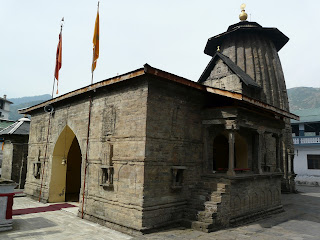Gangaikonda Cholapuram Temple is an architectural work of
some genius peoples. Situated at Thanjavur (Tanjore) in Tamil Nadu,
Gangaikondacholapuram can be visited easily through regular buses that are
acquirable from the main towns and cities of Tamil Nadu. In the early 11th
century, the temple got reinforced by Rajendra Chola, who was the son and
successor of Rajaraja Chola. The luscious temple stands next to the popular
Brihadisvara temple at Tanjore. Gangaikonda Cholapuram is considered as the
reproduction of Brihadisvara Temple that was constructed by Rajaraja Chola,
father of Rajendra Chola. Gangai Konda Cholapuram was upright to surpass the
temple made by the father. The temple is popular for having the largest
Shivalingam in the Southern part of India.
The holy sanctorum clenches the 4 meter high lingam which is
in the phallic form of Lord Shiva. To provide a cliquish worship area for the
royal family, the holy place is surrounded with two walls. The baronial
entrance of the sanctum is decorated by the beautiful image of Goddess
Saraswati. The power of Chalukyas is also echoic from the icons of 'Navagrahs'
(Nine planets) and 'Suryapita' (Sun worship).
The precise accounts of the Cholas are written on the copper
plates and temple walls. Preferred place of wreathed heads, the unusual
structure took about 9 years to complete. Gangaikondacholapuram has been looted
for several times, but the sculptural and architectural wealth remained alive.
The temple was rampant to extol the achievements of a belligerent king.
Gangaikondacholapuram is a testimonial to the artisans and architects who
created this outstanding testament.
The brilliant architecture of the temple self-praise of a 9
storey vimanam that widens to the height of 185 feet. Facing the east direction,
Gangai Konda Cholapuram clenches incredible carvings and sculptures. Not less
than 54.86 m in height, the temple construction follows the sort of
Brihadisvara Temple. The whole temple is boomed with rich and complex carvings
that are sole to Chola style of artistry. Known to consist a little northern
style, the structure grasps complex carvings in the Vimanams.
The architecture is a portrait of complex carvings on the
hard granite stones, regardless of the simple style of Cholas. Mind-blowing
carvings adorn the walls and ceilings of Gangaikondacholapuram. The
creativeness of sculptors is pointed in the figures of peaceful Saraswati and
dancing Nataraja. However, the sculptures rampant here are as artistic as found
in any other temples of Cholas. The most interesting are of Ardhanareshwar,
Shiva-Parvati and Ganesha. The stupendous shrine also addresses several
momentous bronzes of the Chola age.

























